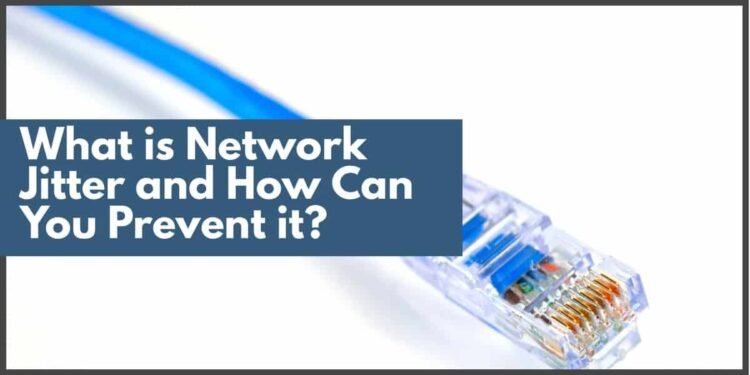Last Updated on September 13, 2022 by admin
Causes Jitter
We all have experienced network jitter that usually destroys our internet experience. Jitter is the difference in time between when a message is sent and when it is received through a data connection. This is usually triggered by data traffic, poor device performance, and a lack of packet priority. The greater the delay, the worse your VoIP and adaptive streaming functionality will be during video conferencing. VoIP turbulence can make conversations jerky and nonsensical – or lose out entirely.
Fundamentally, the more time it takes for data packets to come, the more jitter might degrade visual and audio clarity.
This might be inconvenient when you’re utilizing your computer for leisure activities. When you’re attempting to communicate to the team or make a conference call in a business situation, it’s nearly unpleasant. Jitter can distinguish between a good and a disastrous internet protocol voice (VoIP) conversation.
What is Jitter, and What are its Causes?
So what is Jitter? Jitter is typically produced by IP data traffic. Congestion can develop at the router interfaces or in a supplier or carrier connection if the circuit is not provided correctly. Too many devices connected to a single computer may exhaust bandwidth, reducing your link to a standstill.
While a wireless network provides flexibility and removes the need for power cables through the office, you may encounter poor network connectivity. Wi-Fi is not always safe or reliable enough to rely on for phone conversations on our portable devices.
Minimal jitter levels are expected to affect your telephone line. As a result, there exist degrees of “tolerable jitter.” Appropriate jitter is the most negligible variation in communication that we are ready to allow. You may use a ping jitter check to see whether your VoIP fluctuation and latency are adequate. For several digital data, calculate the mean round-trip time and the minimum round-trip time.
This data may then be used to assess jitter with a quick jitter test. This computes the average of immediate jitter measurements and average jitter measurements over several datagrams.
How to reduce jitter?
Although using buffers to reduce jitter is conceivable, it is not a “miracle solution.” Based on the size of the cache, out-of-order packets can be rearranged before being transmitted. However, in addition to the already existing latency, this adds some delay.
The delay of activities to the receiver end is directly proportional to the size of the buffer. Similarly, having a reservoir that is too short might cause call deterioration because an excessive amount of packets are rejected. As a result, you must use caution while determining the amount of the buffer. In general, they are only effective for delay fluctuations of less than 100 ms; even then, users may perceive a loss in clarity.
How to fix internet jitter?
Try these options to curtail your internet jitter.
- Check your connection’s quality
The most common reason for jitter troubles is a poor internet link. Many VoIP companies provide speed testing. You may test the strength of your link using software supplied by VoIP companies. If you discover that your internet speed or connection is inadequate, you may contact your internet service provider to check if they offer a better plan, such as high-tech internet.
- Use Ethernet cable
It may appear archaic, but having an Ethernet wire can be beneficial if you’re working on a desktop rather than a laptop. When you’re out and about, Wi-Fi connections are excellent, but interference might arise due to how other users are doing. This implies that an Ethernet cable in the workplace can give a stronger connection. There will be less jitter, and you will typically notice fast broadband connections.
- Set packets priority
You may have a quality of service (QoS) option on your router that allows you to prioritize messages over other traffic types. If traffic congestion is the source of your jitter, prioritizing packets may improve the quality of our network and will allow you to operate a seamless connection once and for all.
- Get a powerful router
Most organizations today utilize this information for both voice and data. If your router doesn’t support packet prioritization, the clarity of your calls may suffer. Upgrading to a better router can assist with internet jitter issues since it prioritizes voice data over internet traffic. However, it is sometimes impossible to predict how effective it will manage jitter.
Take jitter precaution today
It would help if you adopted jitter precautions, so it does not mess up your connection and experience. We are sure that by reading the above article, you should now be able to practice some of the steps to ensure you get a seamless internet streaming experience.










